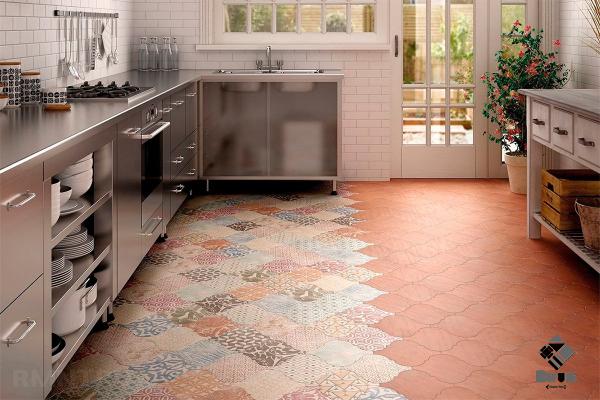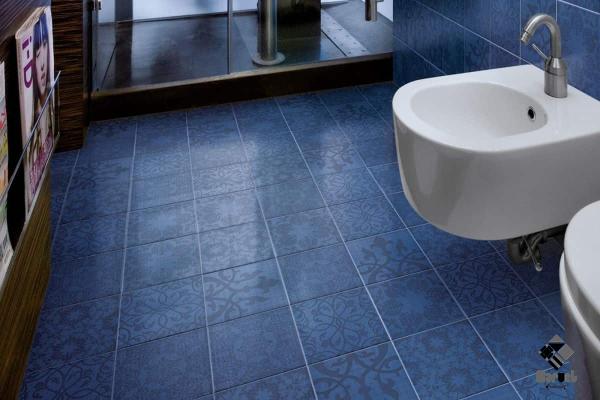Ceramic tile provides a hardy and beautiful surface that may be used on floor and wall. Cutting it, especially when different tools are involved, can be a challenge. With such challenge, if you have a project that requires you to cut ceramic tile, you can ensure that the results you produce are of a high quality by being aware of the instruments you will need and how to make the most of those tools. The majority of do-it-yourselfers are capable of ceramic tiling projects ranging from small to medium in size with considerable ease. When it comes to home improvement, accuracy in measuring, having the right tools, and paying close attention to detail are all essential to achieving results that are satisfying. However, in order to successfully complete tasks, some patience may be required.  Take, for example: Even the most basic tiling work requires cutting a few tiles in order to finish the edges of the surface or to get around obstructions. Tile cutting necessitates the utilization of precise instruments and the taking of precise measurements. If you want your job to go smoothly, it is really necessary to make a plan for how you will deal with all of those cuts in advance. The kind of cuts required vary depending on the occupation. You will simply need to make cuts in a straight line for some of them, while for others, you may additionally need to carve a tile into the shape of a corner or a curve. In addition, the type of cut determines the procedures and tools that are utilized during the process. As you lay out your tile design, make a note of the different types of cuts you’ll need to make, and then go to the section of the following instructions that most closely matches the circumstances of your undertaking. The overall process is the same, regardless of the incisions that are made, and they are as follows: After the tile has been measured, marked, snapped, or cut, the edges should be sanded down to make a smooth finish. If you only need these tools for a single project, it might be more cost-effective to rent them from a home improvement store than than purchase them outright. This is especially true for tile cutters and wet saws. If you have never used any of these tools before, it is highly recommended that you get some practice using them on a few extra tiles or scrap tiles before beginning the project in earnest. Kindly take into consideration that the divisions that are presented below are simply suggestions: In order to successfully install some tiles, you may need to combine a few different tools and approaches. Before commencing any activity that entails cutting tiles, it is imperative that you protect your hands and eyes by donning gloves and eye protection.
Take, for example: Even the most basic tiling work requires cutting a few tiles in order to finish the edges of the surface or to get around obstructions. Tile cutting necessitates the utilization of precise instruments and the taking of precise measurements. If you want your job to go smoothly, it is really necessary to make a plan for how you will deal with all of those cuts in advance. The kind of cuts required vary depending on the occupation. You will simply need to make cuts in a straight line for some of them, while for others, you may additionally need to carve a tile into the shape of a corner or a curve. In addition, the type of cut determines the procedures and tools that are utilized during the process. As you lay out your tile design, make a note of the different types of cuts you’ll need to make, and then go to the section of the following instructions that most closely matches the circumstances of your undertaking. The overall process is the same, regardless of the incisions that are made, and they are as follows: After the tile has been measured, marked, snapped, or cut, the edges should be sanded down to make a smooth finish. If you only need these tools for a single project, it might be more cost-effective to rent them from a home improvement store than than purchase them outright. This is especially true for tile cutters and wet saws. If you have never used any of these tools before, it is highly recommended that you get some practice using them on a few extra tiles or scrap tiles before beginning the project in earnest. Kindly take into consideration that the divisions that are presented below are simply suggestions: In order to successfully install some tiles, you may need to combine a few different tools and approaches. Before commencing any activity that entails cutting tiles, it is imperative that you protect your hands and eyes by donning gloves and eye protection.  If you only need to cut a few tiles and you don’t need to make any curved or corner cuts, then you should be able to get by with just a carpenter’s square and a glass cutter. The latter device is available for a low price and can be purchased in craft stores, as well as those that specialize in home improvement and online. The first step is to measure and then mark the tile. After you have finished measuring, use a pencil to create a mark on the tile to indicate where you want to make the cut. In the second phase, you will score the tile. Place the tile in a horizontal position on a workbench, a piece of plywood, or any surface that is level. Place your square so that it is positioned just little beyond the line that you have shown to ensure that the scoring wheel on the pliers or the glass cutter will hit the correct area. Then, beginning at one of the tile’s edges, place the scoring tool on the line, and while applying firm pressure, drag it across the tile in the desired direction. The tile ought to start showing signs of scratching, which is a sign that it is starting to be scored. In STEP 3, snap the tile into place. If you are using pliers, open them up and insert the tile all the way, making sure the scoring wheel is positioned just beneath the line you scored on top of the tile. If you are not using pliers, simply insert the tile all the way. Squeeze the pliers while applying light pressure to the tile you are supporting until it snaps. To break a tile with a glass cutter, position a piece of wire hanger or similar material of an adequate size beneath the scored line, and then apply pressure to each side of the tile. You also have the option of grabbing a pair of tile nippers and cutting off the section that has been scored.
If you only need to cut a few tiles and you don’t need to make any curved or corner cuts, then you should be able to get by with just a carpenter’s square and a glass cutter. The latter device is available for a low price and can be purchased in craft stores, as well as those that specialize in home improvement and online. The first step is to measure and then mark the tile. After you have finished measuring, use a pencil to create a mark on the tile to indicate where you want to make the cut. In the second phase, you will score the tile. Place the tile in a horizontal position on a workbench, a piece of plywood, or any surface that is level. Place your square so that it is positioned just little beyond the line that you have shown to ensure that the scoring wheel on the pliers or the glass cutter will hit the correct area. Then, beginning at one of the tile’s edges, place the scoring tool on the line, and while applying firm pressure, drag it across the tile in the desired direction. The tile ought to start showing signs of scratching, which is a sign that it is starting to be scored. In STEP 3, snap the tile into place. If you are using pliers, open them up and insert the tile all the way, making sure the scoring wheel is positioned just beneath the line you scored on top of the tile. If you are not using pliers, simply insert the tile all the way. Squeeze the pliers while applying light pressure to the tile you are supporting until it snaps. To break a tile with a glass cutter, position a piece of wire hanger or similar material of an adequate size beneath the scored line, and then apply pressure to each side of the tile. You also have the option of grabbing a pair of tile nippers and cutting off the section that has been scored.  Round off the edges of the tile in the fourth step. In the event that the tile’s cut edge is jagged, a rubbing stone can be used to smooth it out. If you need to cut a large number of tiles at once or if you need to cut from corner to corner, you should use a tile cutter. Whether you decide to buy a tile cutter altogether or rent one to save a few dollars, you need to be sure that the tile cutter you choose has a cutting capacity that is adequate for the tile you intend to cut. Then, as was mentioned before, become comfortable with this tiling tool by practicing its use on a few extra tiles until you have reached that level of comfort. The first step is to measure and then mark the tile. Mark the spot on the tile with a pencil where you want to make the cut using the measuring tape. In the second phase, you will score the tile. Bring the tile and the tile cutter into the room. Check to see that the line you have specified is directly below the scoring wheel, and that the tile is tightly pushed up against the fence. While pulling down slightly on the handle, move the wheel across the tile in front of you. The tile ought to start showing signs of scratching, which is a sign that it is starting to be scored. In STEP 3, snap the tile into place. After you have scored the tile, move the handle slightly away from the edge of the tile and position it such that the breaking feet can rest in a level position on top of the tile. If you put pressure on the handle, the tile will crack under the pressure.
Round off the edges of the tile in the fourth step. In the event that the tile’s cut edge is jagged, a rubbing stone can be used to smooth it out. If you need to cut a large number of tiles at once or if you need to cut from corner to corner, you should use a tile cutter. Whether you decide to buy a tile cutter altogether or rent one to save a few dollars, you need to be sure that the tile cutter you choose has a cutting capacity that is adequate for the tile you intend to cut. Then, as was mentioned before, become comfortable with this tiling tool by practicing its use on a few extra tiles until you have reached that level of comfort. The first step is to measure and then mark the tile. Mark the spot on the tile with a pencil where you want to make the cut using the measuring tape. In the second phase, you will score the tile. Bring the tile and the tile cutter into the room. Check to see that the line you have specified is directly below the scoring wheel, and that the tile is tightly pushed up against the fence. While pulling down slightly on the handle, move the wheel across the tile in front of you. The tile ought to start showing signs of scratching, which is a sign that it is starting to be scored. In STEP 3, snap the tile into place. After you have scored the tile, move the handle slightly away from the edge of the tile and position it such that the breaking feet can rest in a level position on top of the tile. If you put pressure on the handle, the tile will crack under the pressure.  Round off the edges of the tile in the fourth step. In the event that the tile’s cut edge is jagged, a rubbing stone can be used to smooth it out. Deals on the Corner, as well as the Really Huge Jobs If you need to make corner cuts around door jambs or wall outlets, you should either purchase a wet saw or rent one from your local home improvement business if you will be cutting multiple tiles for a major project. (Unless you anticipate accomplishing a significant number of jobs of the same sort in the near future, it is recommended that you rent.) Before using a power tool, be sure you have carefully read the instructions and followed all of the recommended safety measures. Before beginning the actual project, it’s a smart idea to run through a few practice cuts first. The first step is to measure and then mark the tile. Mark the spot on the tile with a pencil where you want to make the cut using the measuring tape. The next step is to cut the tile with a wet saw. Make sure that the tub contains a suitable amount of water, and make sure that you follow all of the guidelines that the manufacturer provides for utilizing the wet saw. Before making your cut with the wet saw, just as you would do with a table saw, make sure that water is running over the blade and that the saw is turned on. The third step is to round off the edges of the tile. In the event that the tile’s cut edge is jagged, a rubbing stone can be used to smooth it out.
Round off the edges of the tile in the fourth step. In the event that the tile’s cut edge is jagged, a rubbing stone can be used to smooth it out. Deals on the Corner, as well as the Really Huge Jobs If you need to make corner cuts around door jambs or wall outlets, you should either purchase a wet saw or rent one from your local home improvement business if you will be cutting multiple tiles for a major project. (Unless you anticipate accomplishing a significant number of jobs of the same sort in the near future, it is recommended that you rent.) Before using a power tool, be sure you have carefully read the instructions and followed all of the recommended safety measures. Before beginning the actual project, it’s a smart idea to run through a few practice cuts first. The first step is to measure and then mark the tile. Mark the spot on the tile with a pencil where you want to make the cut using the measuring tape. The next step is to cut the tile with a wet saw. Make sure that the tub contains a suitable amount of water, and make sure that you follow all of the guidelines that the manufacturer provides for utilizing the wet saw. Before making your cut with the wet saw, just as you would do with a table saw, make sure that water is running over the blade and that the saw is turned on. The third step is to round off the edges of the tile. In the event that the tile’s cut edge is jagged, a rubbing stone can be used to smooth it out.  Creating Cuts on Curved Tiles Tile nippers can be utilized for the production of curved cuts as well as the removal of small fragments of tile. Be patient, as just a small amount of the tile at a time can be successfully cut in this method at any given moment. The first step is to measure and then mark the tile. Mark the spot on the tile with a pencil where you want to make the cut using the measuring tape. In the second step, snip the tile. After starting at one of the tile’s edges, place the tile in the tile nippers and squeeze the handles together to cut off a section of the tile. Because of this, you will be able to go closer to the line that you have been shown while still just removing a small bit of one tile at a time. If you try to remove too much of the tile all at once, you run the danger of breaking it. As you get closer to the finish line, you should take nips that are progressively smaller. The third step is to round off the edges of the tile. Because a tile that has been nipped will have a jagged edge, it is important to rub the jagged edge down with a rubbing stone. We, as one of the most professional exporting team in the area, will be glad to cooperate will traders and importers around the world.
Creating Cuts on Curved Tiles Tile nippers can be utilized for the production of curved cuts as well as the removal of small fragments of tile. Be patient, as just a small amount of the tile at a time can be successfully cut in this method at any given moment. The first step is to measure and then mark the tile. Mark the spot on the tile with a pencil where you want to make the cut using the measuring tape. In the second step, snip the tile. After starting at one of the tile’s edges, place the tile in the tile nippers and squeeze the handles together to cut off a section of the tile. Because of this, you will be able to go closer to the line that you have been shown while still just removing a small bit of one tile at a time. If you try to remove too much of the tile all at once, you run the danger of breaking it. As you get closer to the finish line, you should take nips that are progressively smaller. The third step is to round off the edges of the tile. Because a tile that has been nipped will have a jagged edge, it is important to rub the jagged edge down with a rubbing stone. We, as one of the most professional exporting team in the area, will be glad to cooperate will traders and importers around the world.










Your comment submitted.